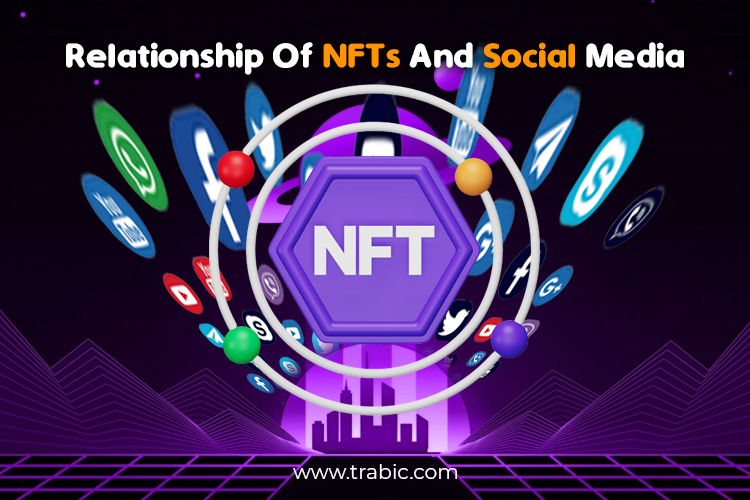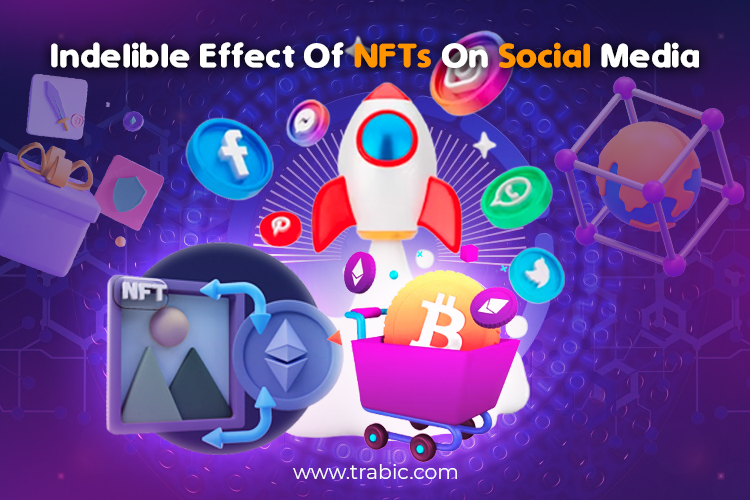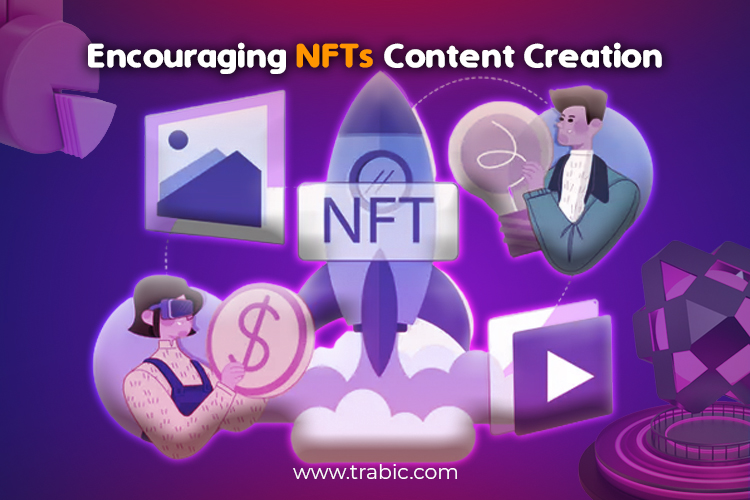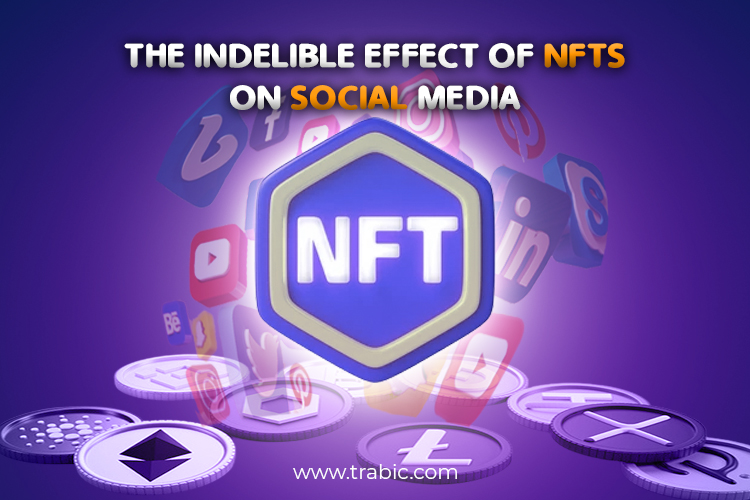How are NFTs and social media related?
NFTs and social media are related in various ways, and the intersection of the two can potentially transform how we create and share digital content. NFTs deliver a strange way for creators to monetize their work and protect their intellectual property, while social media provides a platform to share their work with a broader audience.
NFTs and social media are related in several ways. Social media platforms like Twitter and Instagram allow creators to share their NFTs with a broader audience. This can increase exposure and demand for their digital assets. Some social media platforms, such as TikTok and Discord, have launched NFT marketplaces where users can buy and sell NFTs.
This provides a new revenue stream for creators and allows users to own unique digital assets. Social media influencers and creators have promoted NFTs as a new and innovative expression. This has helped to raise awareness of NFTs and their potential to transform the art world. Some social media influencers and creators have used NFTs to monetize their content. For example, they may offer exclusive NFTs as a reward for supporting their work or provide NFTs to access exclusive content. NFTs can be used to protect creators’ intellectual property on social media platforms. This can help prevent the unauthorized use and distribution of digital content, a common problem on social media.

The world of social media has been disrupted by the arrival of Non-Fungible Tokens (NFTs). This unique digital asset has made a significant impact on the way we perceive and consume content. NFTs are cryptographic tokens representing a unique asset, usually a digital artwork or collectible. They have gained immense popularity recently, with many artists, musicians, and celebrities jumping on the NFT bandwagon to monetize their digital creations.
The impact of NFTs on social media has been nothing short of indelible. Social Media Platforms, including Twitter, Instagram, and TikTok, have become hubs for NFT sales, auctions, and promotion. The relationship between NFTs and social media is symbiotic, with both benefiting from the other’s presence. NFTs have enabled social media users to monetize their digital creations, while social media has provided NFTs with a platform to gain mass adoption.
What are how NFTs could have an indelible effect on social media?
In recent years, the art world has seen a significant shift towards digital art, and with that, a new phenomenon has emerged: non-fungible tokens, or NFTs. NFTs are unique digital assets verified on a blockchain and cannot be replicated or exchanged for anything else. While their applications in the art world have been well-documented, the indelible effect of NFTs on social media has yet to be fully realized.
At their core, NFTs offer a new way to authenticate and monetize digital content. Social media platforms, primarily built around user-generated content, could benefit significantly from this innovation. For instance, a user who creates a popular meme or viral video could sell the NFT for a significant profit. This would incentivize creators to produce high-quality content and help level the playing field for small creators who are often undervalued or under-compensated for their work.

Non-Fungible Tokens (NFTs) have recently emerged as a new path for developers to monetize their digital content. NFTs are unique, indivisible tokens created using blockchain technology, and they can represent anything from digital art to music to tweets. While NFTs have gained much attention for their potential as a new form of art and asset ownership, they also have the potential to have a significant impact on social media.
NFTs have the potential to have a significant impact on social media. They could encourage more content creation, increase engagement, change the economics of social media, protect intellectual property, and create new forms of expression. As NFTs continue to gain popularity, it will be interesting to see how social media platforms adapt and integrate this technology into their platforms. Here are some ways NFTs could have an indelible effect on social media.
Encouraging content creation
The digital world has become a canvas for artistic expression and social engagement, and the emergence of non-fungible tokens (NFTs) has transformed how we view and value digital art. NFTs are digital assets that are verifiable and unique, providing a means for creators to authenticate their work and receive fair compensation for their efforts. This new technology can potentially revolutionize the creative industry, including social media, by encouraging content creation and giving creators more control over their digital creations.
Social media platforms have long been a breeding ground for creativity, allowing users to share their art, music, writing, and other forms of expression with a global audience. However, despite the enormous amount of content generated on these platforms, creators often need help to monetize their work and receive recognition for their efforts. NFTs can change this by providing a new means of value exchange and creating a marketplace where digital creators can sell their work directly to collectors and fans.
By creating an environment where creators are rewarded for their unique talents, NFTs incentivize content creation and encourage artists to continue producing high-quality content. This can have a transformative effect on social media, as creators who might have otherwise given up on their art due to a lack of financial incentives can now pursue their passions and build their careers. NFTs allow creators for their work monetization in a previously impossible manner, which could lead to an influx of high-quality content on social media platforms.

NFTs deliver a new method for creators to monetize their content, which could encourage more people to make and transfer content on social media. This could lead to an increase in the quality and quantity of content on social media platforms. One of the vital indelible effects of NFTs on social media is that they have the potential to encourage content creation. This is because NFTs opens up a new chance for creators to monetize their digital content, which could incentivize more people to create and share content on social media platforms.
The ability to monetize digital content through NFTs can encourage more people to create and share content on social media platforms. This could increase the quality and quantity of content available on these platforms, which would be a positive outcome for creators and audiences. NFTs deliver creators a unique way to monetize their digital content. By creating an NFT of their work, creators can sell it to interested buyers and earn a percentage of the sale price.
This provides an additional revenue stream for creators beyond traditional forms of monetization, such as advertising or sponsored content. NFTs also give creators more control over their digital content. By creating an NFT of their work, creators can prove ownership and authenticity, which can help prevent unauthorized use or plagiarism. This gives creators more confidence in sharing their work on social media platforms.
NFTs can also give creators greater recognition and exposure. When a creator’s NFT is sold, it can generate buzz and publicity, leading to more followers and fans. This can create a positive feedback loop where creators are motivated to create more content because of the positive response they receive from their audience. NFTs can encourage creators to be more creative and experimental with their content. By providing a new way to monetize digital content, NFTs can incentivize creators to push the boundaries of what is possible with digital media. This could lead to new and innovative forms of content that would not have been possible without the incentive provided by NFTs.
Increasing engagement
Another remarkable effect of NFTs on social media is that they have the potential to increase engagement on these platforms. NFTs could also increase engagement on social media platforms. For example, creators could use NFTs to reward their most engaged followers with unique digital assets. This could encourage people to engage more with content and closely follow their favorite creators. NFTs give creators a renewed way to reward and engage with their followers, encouraging more interaction and participation on social media platforms.
NFTs can be used as a reward for engagement on social media platforms. For example, a creator could create an NFT only available to their most engaged followers, such as those who like, comment, and share their posts frequently. This incentivizes followers to engage more with the creator’s content, which can lead to increased engagement overall. NFTs can also be used to provide exclusive content to followers. For example, a creator could create an NFT that provides access to a video or live stream event unavailable to the general public.
This creates a sense of exclusivity and can encourage followers to stay engaged with the creator’s content to access these exclusive offerings. NFTs can also be used to gamify engagement on social media platforms. For example, a creator could create an NFT awarded to the first 100 people who comment on a post or to the person who shares a post most often. This creates a game-like element to engagement on social media, which can be fun and motivating for followers.
Finally, NFTs can provide creators with new revenue streams that can be used to create more engaging content. For example, a creator could use the revenue generated from NFT sales to fund the creation of new and innovative content designed to increase engagement on social media platforms. Hence, NFTs can increase engagement on social media platforms by providing creators with new ways to reward and engage with their followers. This can lead to a more active and engaged community on these platforms, benefitting creators and audiences.
In recent years, the advent of Non-Fungible Tokens (NFTs) has taken the world by storm. NFTs are digital assets using blockchain technology to authenticate and verify ownership. While initially used to buy and sell art, music, and other digital assets, NFTs are now being used to revolutionize social media. In this essay, we will explore how NFTs could have an indelible effect on social media by increasing engagement.
Social media platforms have always struggled with keeping users engaged for extended periods. Among the reasons is the need for a tangible incentive for users to stay active. NFTs could be the solution to this problem. Using NFTs, social media platforms can offer users unique digital assets with real-world value. This incentivizes users to stay active on the platform, engage with others, and create content.
NFTs could also change the way we think about social media content. Social media content is brief, disappearing within seconds or minutes of posting. With NFTs, social media content could become permanent, with every post being a valuable digital asset. This would encourage users to put more effort into their posts, making social media a more meaningful and valuable platform.
Changing the economics of social media
Another indelible effect of NFTs on social media is that they can change the economics of these platforms. NFTs could also change the economics of social media. Rather than relying solely on advertising revenue, social media platforms could generate revenue by taking a percentage of NFT sales on their platform. This could lead to a more sustainable business model for social media platforms. NFTs delivers a unique way for developers to monetize their digital content, which could shift the balance of power away from social media companies and towards individual creators.
NFTs provide a new monetization option for creators that is more creator-centric than traditional forms of monetization, such as advertising or sponsorships. With NFTs, creators have more control over the sale and distribution of their content, allowing them to get more of the value they create. NFTs can also help to democratize monetization on social media platforms. In traditional advertising-based models, only a few creators can capture most of the revenue generated on these platforms.
With NFTs, however, any creator has the potential to monetize their content, regardless of their size or reach. NFTs could also help shift social media’s economics from an attention-based model. In an attention-based model, social media companies generate revenue by selling users’ attention to advertisers. With NFTs, however, revenue is generated through the sale of unique digital assets, which creates a more straightforward relationship between developers and their audience.
Finally, NFTs could also provide new revenue streams for social media companies. For example, social media platforms could take a commission on selling NFTs or create a marketplace for NFTs. This could diversify their revenue streams and reduce their reliance on advertising-based models. Overall, NFTs can change social media’s economics by bringing content monetization opportunities for creators and shifting the balance of power away from social media companies. This could create a more equitable and sustainable ecosystem for creators and audiences.
Protecting intellectual property
NFTs could also protect the intellectual property of creators on social media. By creating an NFT of their content, creators could prove ownership and authenticity of their work. This could prevent unauthorized use of their content and ensure they are appropriately compensated for their work. NFTs can provide a way for creators to prove ownership of their digital content, which can help to prevent unauthorized use and distribution.
NFTs provide a way for creators to prove ownership of their digital content. This is because each NFT is unique and includes a digital signature that can be used to verify ownership. This helps prevent unauthorized use and distribution of the content, providing a clear record of who owns the original work. NFTs also provide a way to trace the ownership history of digital content. Each time an NFT is sold or transferred, the transaction is registered on the blockchain, which creates an immutable record of the ownership history of the content.
This can be useful in cases where ownership of a digital asset is disputed or where there are concerns about copyright infringement. NFTs can also be used to ensure that creators receive royalties for using their digital content. For example, an NFT could be programmed to automatically transfer a percentage of the sale price each time it is sold or transferred. This creates a recurring revenue stream for creators and helps to protect their intellectual property.
Finally, NFTs can help establish the value of original digital content works. By creating a market for unique digital assets, NFTs provide a way to determine the value of original works and can help to prevent unauthorized use and distribution of the content. Overall, NFTs have the potential to protect intellectual property on social media by providing a way for creators to prove ownership of their digital content, trace ownership history, ensure royalty payments, and establish the value of original works. This can create a more secure and sustainable ecosystem for creators and audiences.
Creating new forms of expression
Finally, NFTs could create new forms of expression on social media. For example, creators could use NFTs to create interactive and immersive digital experiences beyond the static content on social media platforms. NFTs provide a new medium for creators to explore and experiment with, which can lead to the development of new and innovative art forms. NFTs provide a way to create unique digital assets that can be used in new and innovative ways. For example, artists can create interactive digital art that changes or responds to user input over time. This creates a new medium for artists to express themselves and explore new creative avenues.
NFTs can also facilitate collaboration between artists, leading to the creation of new and innovative works. For example, multiple artists can contribute to a single NFT or create NFTs that respond to each other in exciting ways. This creates a new form of collaboration unique to the NFT medium. NFTs can also make ownership of digital art more accessible to a broader audience. Because NFTs can be bought and sold on blockchain marketplaces, it is easier for people to own a piece of digital art they love.
This creates a new form of ownership that is not tied to physical objects and can help to democratize access to art. Finally, NFTs can be programmed to respond to specific events or conditions, which creates a new form of programmable art. For example, an NFT could be programmed to change color when the price of a specific cryptocurrency reaches a certain level. This creates a new form of art that is interactive and responsive to the world around us.
NFTs have the prospect to devise new forms of expression on social media by providing a new medium for artists to explore and experiment with, facilitating collaboration between artists, making ownership of digital art more accessible, and creating programmable art that responds to the world around us. This can lead to the development of innovative art forms that push the boundaries of what is possible.
